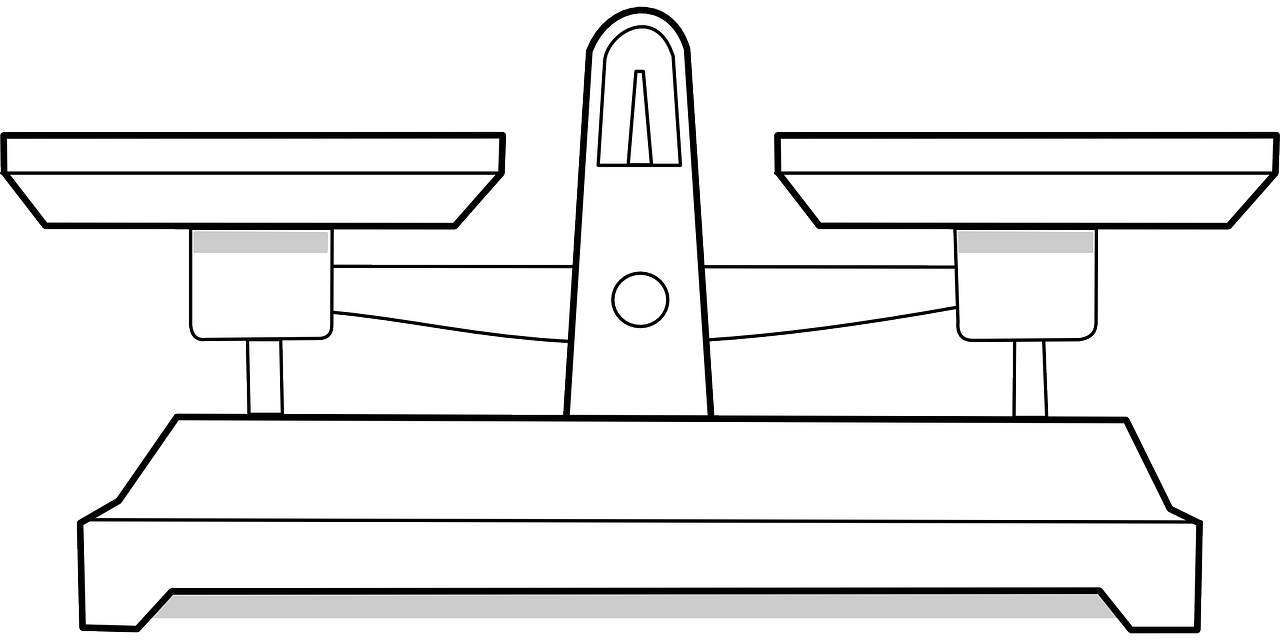Welcome to our blog post on the fascinating topic of using a triple beam balance to find mass! If you’ve ever wondered how this simple yet powerful tool works, you’re in the right place. Whether you’re a student learning about measurements in science class or simply curious about the mechanics behind finding mass, we’ve got you covered.
In this blog post, we will explore the ins and outs of triple beam balances and how they are used to determine the mass of an object. From understanding the principles behind balancing an object on the measurement tray to recording accurate measurements, we’ll walk you through it step by step. So, let’s dive in and unlock the secrets of the triple beam balance!

How to Master the Art of Finding Mass with a Triple Beam Balance
Understanding the Basics
So, you’ve landed in the wonderful world of science, where precision and accuracy rule. And if you happen to be in a laboratory setting, chances are you’ll come face-to-face with this marvelous contraption called a triple beam balance. Now, don’t let its complex appearance intimidate you. In reality, it’s nothing more than a fancy weighing scale designed to measure the mass of objects with utmost precision. Let’s break it down, shall we?
The Anatomy of a Triple Beam Balance
First, let’s dissect this beast and understand its essential parts. Like any respectable contraption, the triple beam balance has a few key components that come together to work their magic.
1. The Pan
Think of the pan as the superstar of this show. It’s the platform where you place the object whose mass you want to measure. Just make sure to wipe off any crumbs or glitter remnants from your last science experiment. We want accurate measurements, right?
2. The Beams
Now, brace yourself for a triple trouble of beams. Imagine a beam trio that forms the backbone of this balance. These beams, known as the Front Beam, Middle Beam, and Rear Beam, are delicately calibrated with a series of notches to ensure we get those precise measurements.
Mastering the Art of Balance
You may be wondering, how does one use this triple beam balance to find mass? Fear not, young scientist, for the process is simpler than you might imagine. Here’s the secret formula to success:
1. Zeroing it Out
Start by checking if your balance stands at zero. If not, panic not! Just slide the riders on each beam until they all align with the zero marks. Ah, perfect equilibrium!
2. Place and Calibrate
Once the balance is zeroed out, gently place your object on the pan. But wait, before you jump to conclusions, this isn’t a one-and-done deal. Begin by sliding the riders on each beam. Start with the Rear Beam, then the Middle Beam, and finally the Front Beam. Patience, dear friend, each move counts!
3. Finding the Balance
To find our trusty balance point, we need to keep a close eye on the position of the beams. Here’s the secret: when they’re perfectly level and aligned, you’ve hit the jackpot! Not there yet? Don’t lose hope; small adjustments are key. Slide those riders regulatedly, maintaining a Zen-like focus. It’s all about achieving that delicate equilibrium.
4. Unlocking the Mass
Once you strike that perfect balance, take a moment to celebrate! You’ve unlocked the precious measurement of mass. Now, simply add the numbers indicated by the riders on each beam and voila! The mass is revealed.
Wrapping Up the Mass Mystery
So there you have it, my curious comrades. The intricate dance of the triple beam balance demystified. It may take a bit of practice, but with time, you’ll harness the skill of finding mass to an absurdly accurate degree. Remember, precision is the name of the game, and this humble apparatus is your faithful guide. Embrace the challenge, fuel your passion for science, and let the hunt for mass begin!
Now, if you’ll excuse me, I’ve got some beams to balance and objects to weigh. Until next time, fellow scientists!

FAQ: How is a Triple Beam Balance Used to Find Mass?
What three steps should be taken before using a top pan balance to measure mass
Before using a top pan balance to measure mass, there are three essential checks you should make:
1. Calibration Check
Start by ensuring that the balance is properly calibrated. This involves making sure the balance pointer aligns perfectly with the zero on the scale. If it doesn’t, follow the manufacturer’s instructions to calibrate it correctly.
2. Leveling Check
Check if the balance is level. Uneven surfaces can affect the accuracy of the measurement. Adjust the balance feet if necessary to achieve proper leveling.
3. Taring Check
Perform a taring check by gently pressing the “Tare” button on the balance or turning the tare dial to zero. This allows the balance to account for the weight of any container or object already on the pan, ensuring an accurate measurement of the desired substance.
Why is mass by difference more accurate
Mass by difference is more accurate because it eliminates inconsistencies caused by measuring the mass directly. By subtracting the initial mass of an empty container from the total mass of the container with the substance inside, we obtain the mass of the substance alone. This method accounts for any possible variations or impurities in the container, providing a more precise measurement of the substance’s mass.
How do you balance the object on the measurement tray
To balance an object on the measurement tray of a top pan balance:
- Place the object gently and carefully on the center of the measurement tray.
- Make sure the object is not touching any sides of the tray or interfering with the movement of the balance arms.
- Adjust the position of the object if necessary until the balance arms are at equilibrium, indicating that the object is balanced.
Does a pan balance measure mass
Yes, a pan balance measures mass. It is a simple and effective tool used to determine the mass of an object. The balance operates on the principle of counterbalancing weights, allowing for accurate measurement of mass.
How is a triple beam balance used to find mass
A triple beam balance is used to find mass by comparing the counterbalance weights on its three beams to the mass of the object being measured. The beams have riders that can slide along them, each representing a different value—hundreds, tens, and ones. By adjusting the riders on the beams and finding the point of balance, you can determine the mass of the object based on the positions of the riders.
What mass is shown on the triple beam balance in grams
The triple beam balance displays mass in grams. The main beam shows the mass in hundreds of grams, the second beam shows the mass in tens of grams, and the third beam shows the mass in single grams.
What is the mass of the object being measured
The mass of the object being measured is the actual weight of the object in grams. The triple beam balance allows you to find this mass by positioning the riders on the balance beams until the beams are in equilibrium. The sum of the masses indicated by the riders will be equal to the mass of the object.
Why is a pan balance a useful tool to measure mass
A pan balance is a useful tool to measure mass because it provides a straightforward and reliable method for obtaining accurate mass measurements. It can be used to measure a wide range of objects and substances, making it a versatile instrument in various scientific and everyday applications.
What is a top pan balance used to measure
A top pan balance is primarily used to measure the mass of objects or substances. Its design, with a pan placed on top, allows for easy placement and removal of the items to be measured. Whether in a laboratory setting or a kitchen, a top pan balance serves as a reliable tool to determine mass accurately.
What is the mass of the 100-gram rider
The mass of the 100-gram rider refers to the counterbalance weight on one of the beams of a triple beam balance. It has a predefined mass of 100 grams, which can be adjusted by moving it along the beam. By positioning this rider on the beam, it contributes to the overall counterbalance and allows for more precise measurement of mass.
How do you record mass
To record mass using a top pan balance or triple beam balance:
- Ensure the balance is properly calibrated and leveled.
- Place the object to be measured on the measurement tray.
- Adjust the position of the counterbalance weights or riders until the balance arms are in equilibrium.
- Read and record the mass indicated by the positions of the counterbalance weights on the beams.
- Take note of the units used (usually grams) and any decimal places displayed for accuracy.
What is the mass in grams of the object being measured in the triple beam
The mass of the object being measured in the triple beam balance is determined by reading the positions of the counterbalance weights. These positions correspond to the mass in grams. The sum of the masses indicated by the riders on the beams represents the mass of the object in grams.
